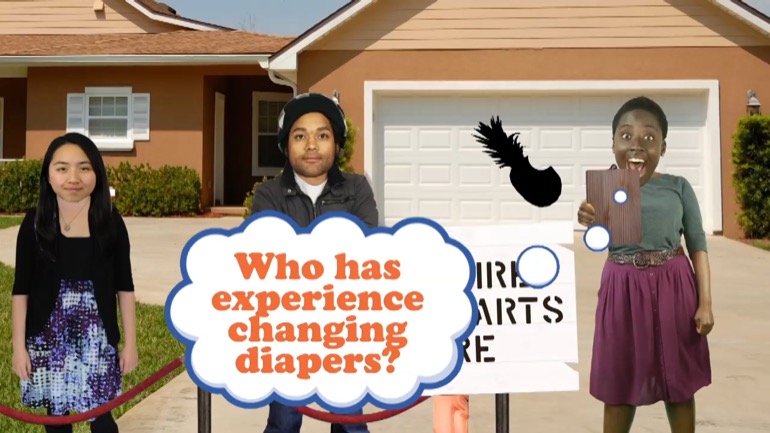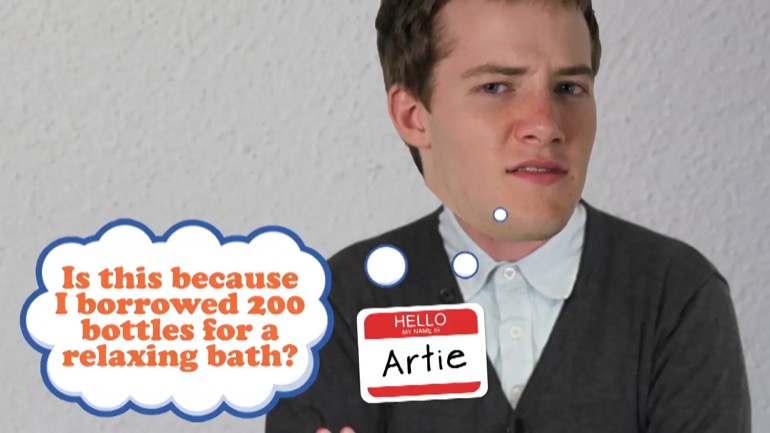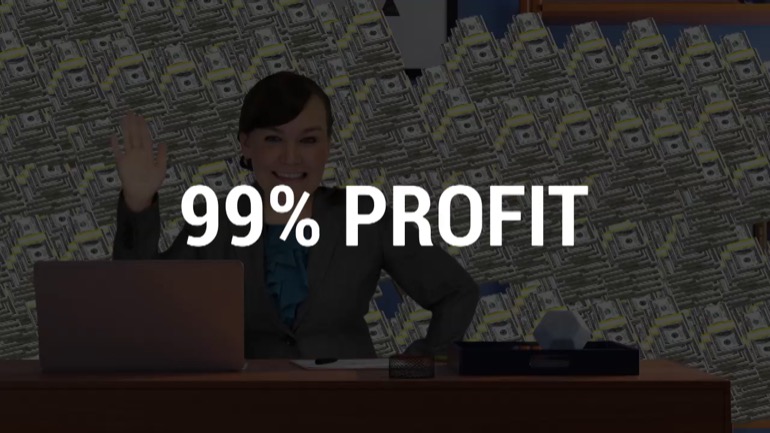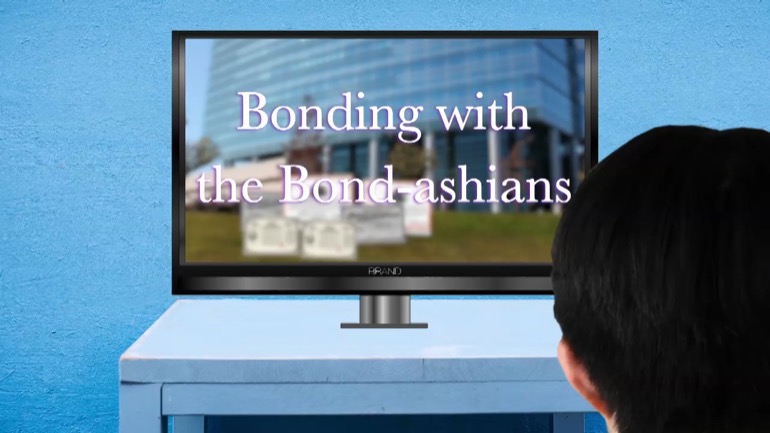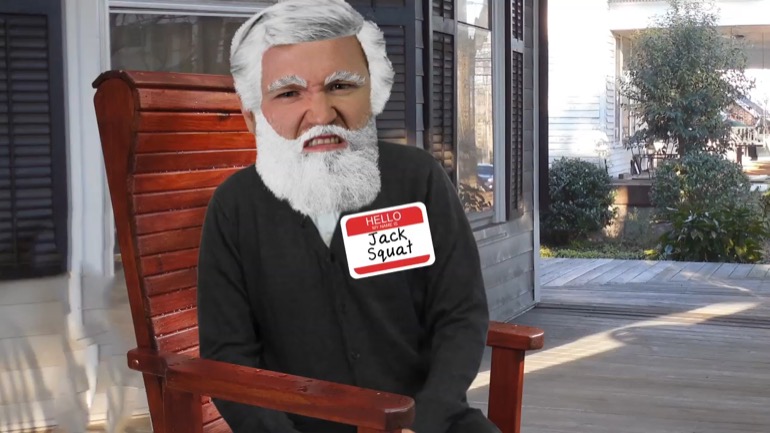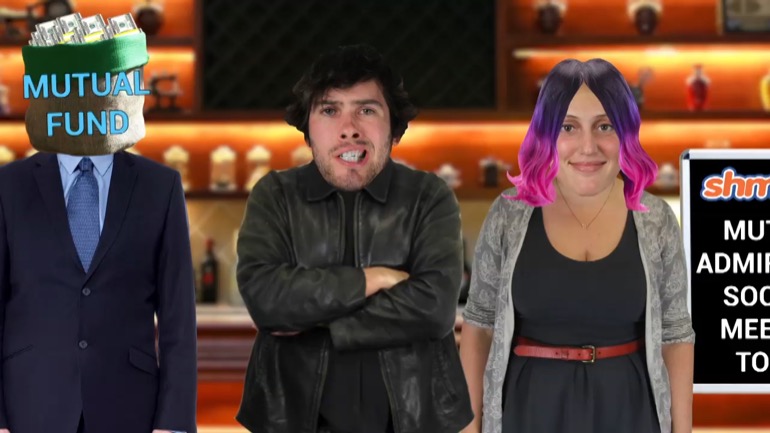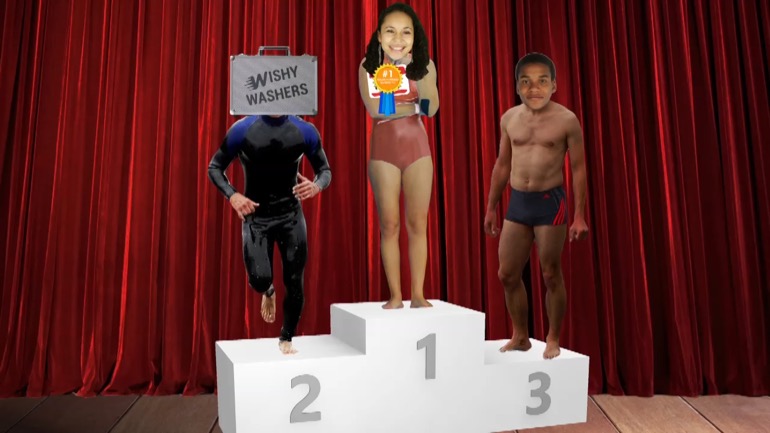ShmoopTube
Where Monty Python meets your 10th grade teacher.
Search Thousands of Shmoop Videos
Principles of Finance Videos 166 videos
How is a company... born? Can it be performed via C-section? Is there a midwife present? Do its parents get in a fight over what to name it? In thi...
Company Formation, Structure, and Inception: Unit Intro. Sorry, Leo DiCaprio fans—we're not going to be breaking down the plot of Inception. We'r...
Okay, so you want to be a company financial manager. It's basically up to you to make money for the shareholders. It would also be swell if you mad...
Principles of Finance: Unit 2, How EBITDA Was Invented: John Malone / TCI 26 Views
Share It!
Description:
EBITDA = Earnings Before Interest, Taxes, Depreciation and Amortization. Okay, so... how was it invented? And why do I care?
Transcript
- 00:00
principles of Finance a la shmoop how EBITDA was invented John Malone TCI
- 00:11
I all right well you may very rationally ask how on earth did something so weird [Guy talking next to a presentation screen]
- 00:17
sounding like EBITDA ever get invented well good question it's not a GAAP term
- 00:23
it's just made up yep EBITDA which well you'll hear a lot about it
- 00:28
cocktail parties on Wall Street thrown by your accountant and you really must [People at a party talking in abbreviations]
Full Transcript
- 00:33
get a life if you find yourself frequenting them well if it does just a
- 00:37
made-up accounting measure but on its own really means a whole lot of nothing [Magician makes some money disappear]
- 00:41
well here's a little story about how EBITDA was invented or at least
- 00:45
promulgated to become standard fare in evaluating investments from both a debt [Guy reading a kid a bedtime story]
- 00:51
and equity perspective alright well there's this guy legendary John Malone [John Malone waving]
- 00:57
godlike if you ever want to know how the real world works inside a cable
- 01:01
television and media in general well this is your yarn but let the screen [The front of the TV is removed to reveal John Malone]
- 01:07
dissolve into a heat wave go back in time to early 1970s there were three
- 01:13
channels on television Fox had not yet been invented as a TV network [TV remote with 3 buttons]
- 01:20
anyway audiences were sick and tired of boring news shows and the occasional [Guy on his head balancing the TV aerial on his foot]
- 01:25
rabbit ear TV channels in the land of UHF way out there on the dial and most
- 01:31
just swell those stations showed only cartoons because kids were the only ones [Kid next to a TV showing static]
- 01:36
patience enough to tolerate such bad reception all right well the founder of
- 01:40
telecommunications Inc or TC I was guy named Bob Magnus
- 01:44
he had the smart vision that audiences by the masses would pay a little money [Busy street]
- 01:48
in order to have choice in the television they watch game shows old
- 01:54
movies sports films so by hook and by crook Bob begged cities to allow him eat
- 02:00
grass that's the right to climb up phone and phone companies to allow him to [Bob going up a telegraph pole]
- 02:05
access and keep climbing up and down those tree trunk poles all day long and [He gets elecruted]
- 02:10
string wires from base stations to neighborhoods and then into homes the [Wires spread out over a neighborhood]
- 02:16
wires went from a fairly local base station and covered a few miles and [Guy next to a mass of cables all tangled together]
- 02:21
broadcast playback machines would play through a whole lot of switches and
- 02:26
wires and eventually the home would get the signal from the server at the
- 02:30
Central Station there well in the old days the playback machine wasn't that
- 02:33
much different from the large old VHS tape machines that he can ask your
- 02:39
grandparents about they were jerky in well they didn't work all the time but
- 02:43
they worked most at a time and they certainly worked well enough early [Guy holding the playback machine on his head]
- 02:47
demand for cable was very high and it was high enough so that when the first [People fighting over a TV in a shop]
- 02:52
few hundred neighborhoods were wired journalists well they wrote about this
- 02:57
great brave new world thing where you could add a dozen or more channels to
- 03:02
the three had to watch today what long came a really smart kid from Bell Labs [Newspaper article about cable]
- 03:07
it was intellectually the Google of its day dr. John Malone newly minted PhD
- 03:13
knew how the signal propagated over the wires and he had great skill in reading [John Malone with equations floating over the wires]
- 03:19
data that is he knew how to think about TV programming like they're optimizing
- 03:24
what people wanted to watch he was also clever when it came to funding like [Malone holding a bake sale]
- 03:28
raising money from Wall Street people remember this is the story about the
- 03:32
birth of EBITDA so their company telecommunications Inc
- 03:36
nobody from shmoop was around to help them give it a more fun name [Guy holding a poop sign over the name]
- 03:40
well they wired a neighborhood of a hundred homes that wiring and
- 03:45
infrastructure cost them about 50 grand back then [Pigeon sat on the wires]
- 03:47
they didn't need more than a flyer on the doorsteps of the homes they wired
- 03:51
for demand to come in and early demand was sudden in many neighborhoods TC I [Guy is hit by a wave of money]
- 03:56
got 30% penetration of subscribers almost immediately while at 25 bucks a
- 04:02
month back then a hundred homes times twenty-five dollars a month meant $2,500
- 04:08
a month in revenues coming back to TC I or annualized 30 grand a year in [Revenue calculations]
- 04:13
revenues from cable subscriptions well as the company grew through the early
- 04:18
80s they also tried to sell advertising but since the three networks colluded
- 04:23
with the minors of advertising ads were almost impossible to sell on cable in [3 people turn up with baseball bats]
- 04:27
the early days yet TC I knew it had value there so it started infomercial TV
- 04:32
programming shows and what became you know the Home Shopping Network in QVC [Woman wearing a giant flossing machine on her head]
- 04:38
well you don't need to worry about that here just know that from $30,000 they
- 04:42
received in a given year well they had maintenance costs of about [Tree falls over and knocks the wire down]
- 04:45
five grand on their wind beaten wires and they paid about 10 grand in
- 04:49
royalties to the already existing studios for rental or licensing of their
- 04:54
video libraries these were reruns of now ancient TV series like Gilligan's Island
- 05:00
The Brady Bunch and you know art films the profit margins [A couple kissing]
- 05:06
were very high on a unit basis and an existing cable system would well [Bob's desk is covered by cash]
- 05:11
basically pay for itself entirely in about three years that is
- 05:15
the gross profits from the revenues minus the maintenance and the licensing
- 05:20
added up would pay to install an entire station in just three years
- 05:24
while TC I didn't own just one system in fact they started with one and they
- 05:30
started the applications process to buy another system in another and 30 more [Systems spreading out over a city]
- 05:36
more and so on and they kept buying more and more cable systems if the company [Pins are put into the planet and it deflates]
- 05:41
had had to raise money giving out equity all the time ie shares of stock or
- 05:45
pieces of ownership of itself well the founder and his optionally employees
- 05:51
would have been so diluted that their efforts wouldn't have really been worth [Definition of dilution]
- 05:56
the 80 hour weeks divorces then we're lousy parenting they [Bob forgetting who his son is]
- 06:01
suffer though in the process of building this amazing company as if that's ever
- 06:05
worth it but while we digressed so instead of using equity they used debt
- 06:10
or loans and many small buckets to eventually build system after system [Loan buckets appearing]
- 06:14
owned them and control them well the pitch was simple we'll pay you a percent
- 06:19
or two in interest per year beyond a normal corporate bond like if corporates
- 06:24
or 6% will pay you seven or eight because yes there is risk and yes we [Bob making his pitch]
- 06:29
need the money like now before the network television broadcast companies
- 06:34
would wake up and compete with us or other competition comes in but our [Graph showing high profits with high penetration]
- 06:38
systems are really profitable with only 30 percent penetration in a neighborhood
- 06:42
and we think they'll go somewhere to two thirds like 65 percent penetration or
- 06:47
better by the time were fully penetrated anyway the bank's all Pony DUP and [Sharks investing]
- 06:53
loaned TCI money and the cable systems performed as expected or better but the [Someone sat in front of their TV wearing the flossing machine]
- 06:58
company was never profitable why because every excess dollar available to them [Safe opens and there is only a fly inside]
- 07:05
was deployed to buy the rights to new systems or just buy new systems or build [Hand grabs money from the company and drops it on new neighborhoods]
- 07:12
new systems every dollar got put to work for growth and then in the 80s and 90s
- 07:18
to upgrade systems from having only 25 channels to 35 and 50 and a hundred and [Dance show on TV]
- 07:23
five hundred and with Internet and with DVR and telephony and pay-per-view
- 07:28
service and so on so that today an average cable bill is more like a
- 07:33
hundred twenty bucks a month rather than at 25 that they started with but as a [TV is smashed with a sledge hammer]
- 07:38
company the cable industry didn't generate earnings they were always break
- 07:42
even on a cash on cash basis because all their cash got reused
- 07:46
other things and the accounting laws required that they write down the asset
- 07:51
of their cable plant at a much faster decay rate than the rate at which the [Accountant holding a 0 dollar sign]
- 07:56
system actually declined in value so the streets love affair with cable ended and
- 08:02
TCI traded to very low multiples as investors struggled with what the proper
- 08:08
metric was to value the company and this is where EBITDA in save the day by
- 08:15
looking at the company from an EBITDA bias it removed the cloud of debt [EBITDA with angel wings]
- 08:21
bondholders worried that tomorrow everyone would stop watching television [Trader on the phone]
- 08:25
oh they're a nervous bunch it removed taxes because TC I never paid taxes [IRS man looking confused]
- 08:31
because well hell it was never profitable and mainly removed the
- 08:34
depreciation of old cable systems which instead of being treated initially like
- 08:39
computers which get amortized to be worth almost nothing in three years were [Definition of amortization]
- 08:43
finally viewed as being fully depreciated after 10 years the reality
- 08:48
is that many of the systems needed relatively small upgrades to be very
- 08:52
modern and with the hole in the ground already dug and municipalities wanting [Caveman next to a cave]
- 08:58
to be sure good internet service existed it wasn't all that hard to take a string [Ground is ripped open and new cable is put in]
- 09:03
and pull out the old copper wire and replace it with fiber fiber optics well
- 09:09
what was left was a company that traded at about ten times EBITDA for a very
- 09:13
long time and it allowed TCI the cushion so that if it ever did get ahead of ['Debt' elephant in a room with an investor]
- 09:18
itself on the debt side very small amount of equity and shore up
- 09:24
its balance sheet well eventually the company realized
- 09:27
that the dumb pipe was fast becoming a commodity and that satellite would cap [Woman watching money fall on her TV]
- 09:32
the price as they could charge so they invested heavily in each other and they
- 09:36
also invested in programming think you know discovery shark week CNN a whole [Man gets eaten by a shark on his boat]
- 09:41
bunch of things the cable industry today owns large chunks of everything from
- 09:45
time warner and liberty media to ESPN and well you guessed it you know for a
- 09:50
lot of heart films go EBITDA [Pug next to a pineapple]
Related Videos
GED Social Studies 1.1 Civics and Government
What is bankruptcy? Deadbeats who can't pay their bills declare bankruptcy. Either they borrowed too much money, or the business fell apart. They t...
What's a dividend? At will, the board of directors can pay a dividend on common stock. Usually, that payout is some percentage less than 100 of ear...
How are risk and reward related? Take more risk, expect more reward. A lottery ticket might be worth a billion dollars, but if the odds are one in...
